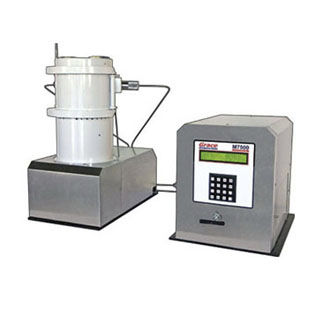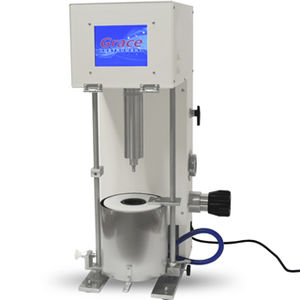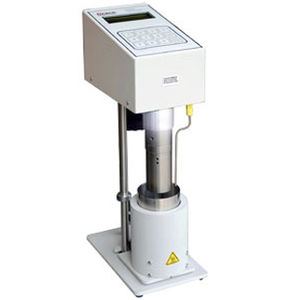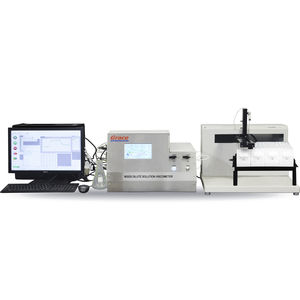
- Metrology - Laboratory
- Metrology and Test Equipment
- Laboratory rheometer
- Grace Instrument Co.
Laboratory rheometer M7 series




Add to favorites
Compare this product
Characteristics
- Other characteristics
- laboratory
Description
Patented design prevents sample contamination
The Grace Instrument M7500 Ultra HPHT Rheometer is a coaxial cylinder, rotational, high pressure, and high temperature rheometer. It is engineered to measure various rheological properties of fluids (including API HPHT tests) under a range of pressures and temperatures, up to 30,000 psi and 600°F. An optional cement module is also available for testing the rheology of cements (see tab "Cement Rheometer", below.)
The Grace Instrument M7500 Ultra HPHT Rheometer employs a unique, patented design which entirely prevents contact between sample fluid within the main test chamber and pressurization fluid, which is injected into interlocking isolated chambers above the test chamber. No other rheometer on the market today can make this claim. The unit is also fully compliant with API 10B and API 13B standards.
Optional components add multiple test functions while saving time, money, and laboratory space
Hardware modules are available which add specific functionality to the M7500, including cement testing, pressure/volume testing, linear swell testing, and more. These modules take the place of stand-alone equipment and can be integrated into the standard M7500 training program, saving training time and consolidating test times. This feature alone enables the M7500 Ultra HPHT Rheometer to provide an excellent ROI.
• The M7500 is built with a thick-walled steel pressure cell, which is surrounded by a fail-safe steel containment vessel to ensure operator safety.
• It is designed for easy test set up, sample loading and post-test cleaning.
Catalogs
2020 Product Catalog
50 Pages
Related Searches
- Test machine
- Measuring device
- Test cabinet
- PC-controllable testing machine
- Automatic test machine
- Compression test machine
- Hydraulic test machine
- Automatic testing system
- Durability test chamber
- Viscosity measurement device
- Electronic testing machine
- Benchtop testing system
- Tabletop testing machine
- Cement test machine
- Semi-automatic test machine
- Laboratory testing system
- Dynamic test machine
- Friction test machine
- Laboratory viscometer
- Compact test machine
*Prices are pre-tax. They exclude delivery charges and customs duties and do not include additional charges for installation or activation options. Prices are indicative only and may vary by country, with changes to the cost of raw materials and exchange rates.






